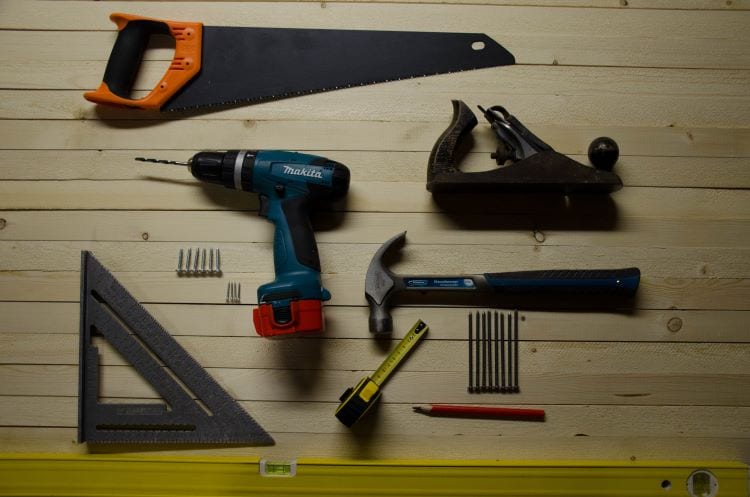Everything You Need to Master Your Next DIY Project

Pinterest and the DIY Network have inspired a new generation of determined, crafty do-it-yourselfers. If you’re ready to build your own treehouse or bravely remodel your kitchen, you’ll need the right tools for a DIY project. Before you channel your inner Chip and Joanna Gaines, review this list to see what you should stock up on.
An Electric Drill
Is there even such a thing as a DIY project without an electric drill? A 12-volt cordless drill with rechargeable batteries is likely your best choice because it’s versatile and light but still powerful enough for just about any DIY job you’ll encounter—unless you’re building your own deck or sunroom, in which case you definitely want to upgrade to an 18-volt drill.
A Level
No shelf-hanging project is complete without a level to ensure the thing is, well, level. This tool is usually a long rectangle that contains an air bubble inside a vial of liquid. When it is placed on a flat and perfectly horizontal surface, the air bubble floats to the center of the liquid. If the air bubbles are off-center at all, your shelf needs to be angled differently to be perfectly straight.
Some levels are very simple, with just one air bubble. Others include multiple vials of liquid, each with a different air bubble, so that you can test the level of a surface more efficiently or account for the angles you need. If they sound low-tech, they are; but they’re also quite affordable.
A Circular Saw
A circular saw has a round blade that efficiently cuts with or against wood grain, ceramic tile, and steel. Since it’s a powered device, it’s an excellent tool when you need to cut large quantities of material. Just keep in mind that the fat-spinning blade is extremely dangerous, so never use it if you’re distracted or around children.
A Stud Finder
How many times have you hung a cabinet or mirror, only to have it crash down within an hour? That’s all too likely to occur if you hang heavy objects on a piece of drywall with nothing behind it. You need to mount heavy wall hangings into the studs hidden behind the drywall to make sure they’re fastened securely.
Since these studs are not visible to the naked eye, you need a tool to locate them. Enter the stud finder. A decent model with two built-in magnets only costs about $10, but you can also upgrade to an electronic stud finder for about $50. The electronic models don’t just identify the screws in the studs, but the exact locations of the studs themselves.
A Palm Sander
A palm sander is a great tool for gentle or light sanding needs. As the name implies, it fits in the palm of your hand to easily polish pieces of wood, especially those that don’t need to be painted. This tool works well with its own power, so you don’t need to exert much force as you sand down bare surfaces. If you like the look of distressed furniture, this tool will be one of the most used items in your collection.
A Basic Toolset
In addition to these individual tools, you need to build a basic toolset, consisting of a hammer, screwdrivers, adjustable wrench, pliers, duct tape, painter’s tape, and a tape measure. You won’t find many DIY projects that don’t require these basic but indispensable items. It also helps to buy a sturdy, well-organized toolbox to store and transport your items. The best models come with a lift-out tray for small items like nails, screws, and sinkers.
With the right tools in your collection and some creative effort, there’s no DIY project you can’t tackle.
Read about micro-investing and how to get started with our complete guide: Micro-Investing: What It Is, Why It’s for You and How to Start.










